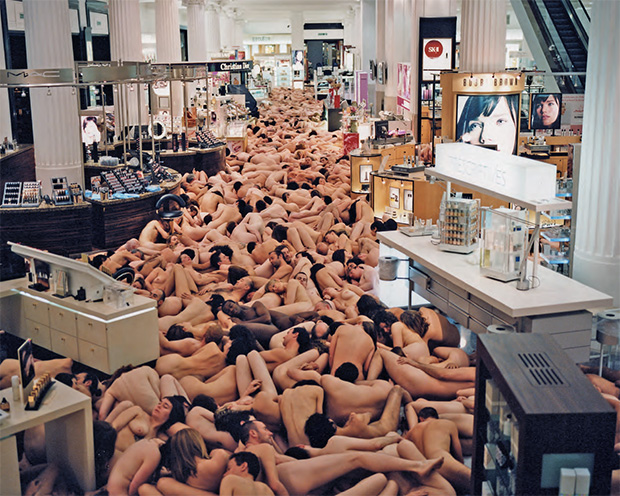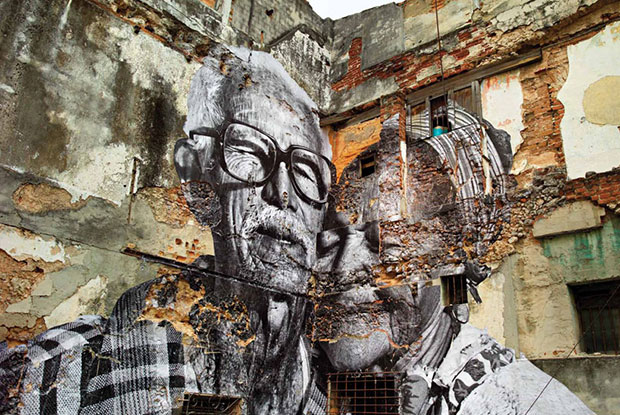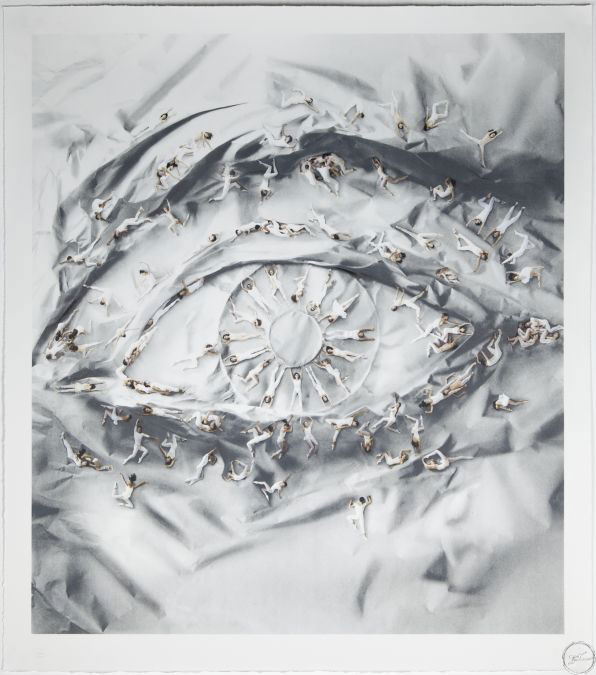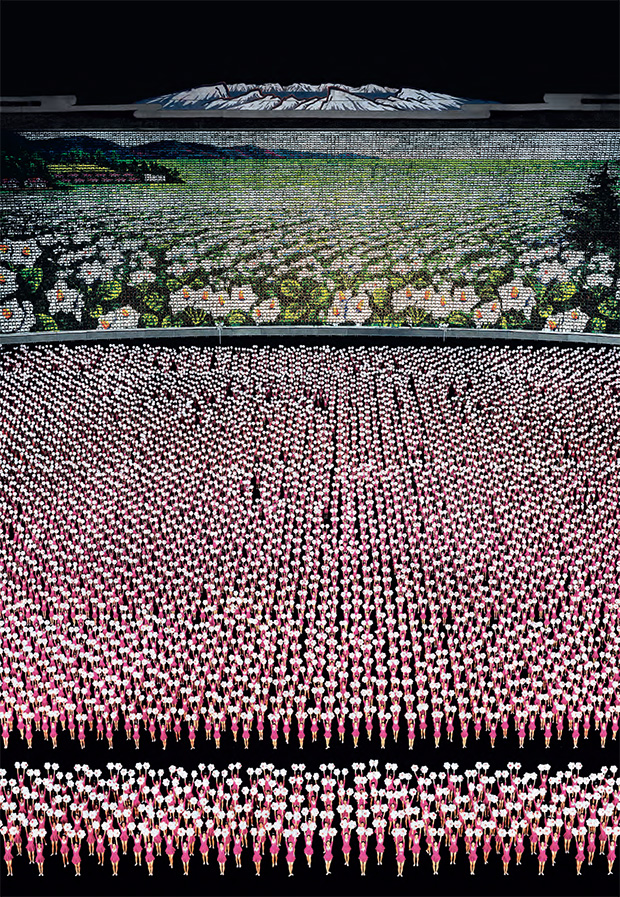
My Body of Art - JR on Spencer Tunick's Consumed 2
We gave JR a copy of Body of Art to browse through, here are a couple of highlights he picked out from it
The French artist and activist JR works in a variety of media, including film, photography, and dance. Yet all of his works relate back to the human body in one way or another. His Portrait of a Generation series brought the faces of Paris’s, poor, suburban young into the centre of the city; his Immigrants project saw him and his team pasting up huge photos of the overlooked from overseas who help our cities to run. Meanwhile, his Wrinkles of the City works saw him photograph and place ennobling huge photographs of the elderly residents in cities as varied and disparate as Havana, Istanbul and Los Angeles.
While JR did not specifically select his aged subjects based on their appearance, the works bring to mind in George Orwell's dying observation that “‘At fifty, every man has the face he deserves.”
“The faces of the old people would reflect their lives,” says the artist. “But also the climate in the places where they live. Sometimes you’d be really surprised.You’d come across someone who really didn’t have that many wrinkles and still had incredible stories, and others that you could tell had worked hard, just by looking at their hands. It was as if their stories were told in their bodies.”

JR says he tends to focus on a single, individual figure, be it an immigrant, a ballerina, or a kid from the banlieues, as it helps him tell a greater narrative.
“More people relate to the individual,” he says. “It brings humanity back into news stories. Each person has one individual story. We forget that when we just watch the news.”
The artist tends to shoot his figures fully clothed, though he admires other photographers who deal with their subjects in different ways. When leafing through our new book Body of Art at Phaidon's London office recently, he singled out the American photographer Spencer Tunick for special praise.
As Body of Art points out, Tunick transforms urban landscapes by filling them with throngs of nude people, creating living installations that he then photographs. For Consumed 2, pictured above, around 650 people undressed in the London department store Selfridges and formed a naked human river that wound through different departments. The naked bodies are without heirarchy and constitute mere building blocks. By doing this, Tunick seeks to challenge the art historical tradition of nude representation, rejecting idealism for realism.

“I love that he takes the most common places and, by bringing bodies into them, you just look at it completely differently,” JR told us. “It feels both human and inhuman at the same time. You can’t believe all those humans would lie down like that, that’s not something you do normally. Those images catch you and, when you see this, you wonder, “How did they do it? All those people, how did you gather them?” And, of course, he also takes great photographs.”
JR has tried his hand at the occasional Tunick-style shoot, most notably in his work with the New York City Ballet company, whom he shot back in 2014, arranging the dancers into the shape of an eye. This visual motif is common in his work, yet the arrangement also allowed him to break up the company’s natural hierarchy.
“Normally, when you take a picture of the whole company, you arrange them into principle dancers and less important ones,” he says. “But I didn’t want to categorise them. I wanted to keep them all at the same level. In that photo, you can’t tell who is who.”

This principle is taken to its extreme in another choreographic image the artist alights on in Body of Art: Andreas Gursky’s picture of North Korea’s startingly large-scale dance display at its annual Arirang Festival. JR travelled to North Korea in 2012, and caught similar performances, albeit not on the same scale.
“The leader, Kim Jung Il, had just died when I was there, so they weren’t staging really big ones,” he says, “but I saw a few. It was freaky and insane, but beautiful as well.”
For a more in depth look at the use of bodies in art buy a copy of Body of Art here. Meanwhile, for more on JR’s own work, get a copy of his new monograph, JR: Can Art Change the World? here.